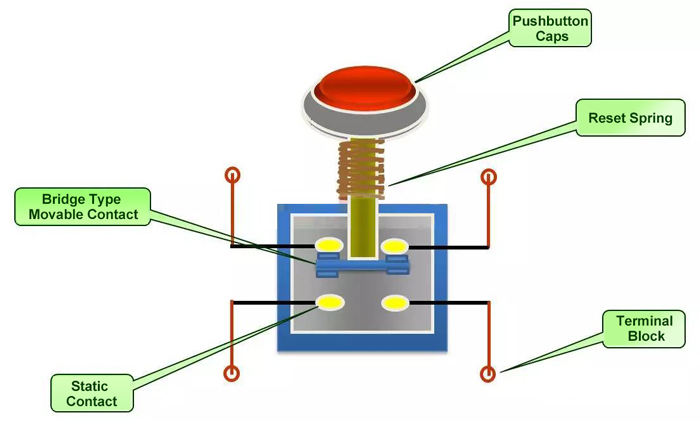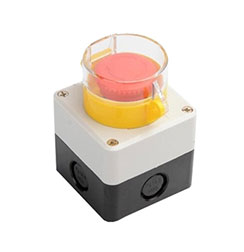How Does a Push Button Work?
Push button, as common switching devices in our daily lives, may seem simple, but they contain sophisticated engineering and electronic principles. In this article, ATO shop will delve into the working principle of push push button, the working process, and the prospects of push push button in the future.
Push Button Working Principle
Push push button work on electronic and mechanical principles, and they are used to control the opening and closing of electrical circuits. In general, push button can be categorized into mechanical push button, touch push button, and switch push button, each type having a different working principle.
Mechanical Push Button: Mechanical push button are one of the most basic types of push button and their working principle is based on physical mechanical contact. When you press a mechanical button, two metal contacts inside the button make contact with each other, forming a closed circuit. This closed circuit allows an electric current to pass through, which triggers the connected device.
Touch Push Button: Touch push button use capacitive touch technology, which works based on capacitive changes. The surface of a touch button usually contains an electrode, and when you touch the button, the capacitance of your body affects the electric field around the electrode, which changes the capacitance value. A detection circuit detects this change in capacitance and triggers the appropriate action.
On/Off Push Button: On/Off push button typically use electronic switching components such as transistors or relays. When you press a switch button, it changes the state of the electronic component, which turns the circuit on or off. These push button are widely used in digital electronic devices such as computers, cell phones, and remote controls.

The Working Process of a Push Button
User Input: The first step in the working process is user input. The user presses the button by finger, hand, or other object, which is a mechanical act that will trigger the button to work.
- Mechanical Response: For mechanical push button, when the user presses the button, the mechanical part of the button will move so that the metal contacts inside make contact with each other to form a closed circuit.
- Electronic Detection: For touch push button and switch push button, when the button is pressed, the internal electronic detection device will detect the change in the button state. For touch push button, a change in capacitance value will be detected. For the on/off button, a change in the state of the electronics will be detected.
- Trigger Operation: Once the button state is detected, the corresponding control circuit will perform the appropriate operation. This can be turning on a light, starting a motor, sending a signal, or triggering the operation of another electronic device. The operating principle and circuit design of the button determine the operation to be performed.
Future Prospects
- Smart Push Button: Future push button will be smarter with more functionality and connectivity. Smart push button can be connected to smart home devices, mobile apps, and the Internet to enable more sophisticated controls and automated operations.
- Haptic Feedback: Future push button may introduce more advanced haptic feedback technology that allows users to sense different states of the button. This could be achieved through vibration, temperature changes, or sound, providing a richer interactive experience.
- Biometric Push Button: Biometrics can be applied to push button to enable them to be recognized based on the user's biometrics. For example, fingerprint recognition push button can increase security and reduce false touches.
- Wearable Push Button: As wearable technology evolves, future push button switch will be embedded in clothing, eyewear, and other wearable devices to provide more convenient control. This will enable users to perform actions without having to take out their cell phones or other remote controls.
- Eco-friendly Push Button: As environmental awareness grows, the future of button design will focus more on sustainability. Energy-efficient materials and technologies will be used to reduce waste and energy consumption. Push button play an integral role in modern life as an important tool for control and interaction. Whether they are mechanical push button, touch push button, or switch push button, they all have different working principles and processes to fulfill various needs.
In the future, push button will continue to evolve, becoming smarter, more functional, and more connected. Technologies such as haptic feedback, biometrics, and wearable push button will make the use of push button more convenient and diverse. At the same time, environmental awareness will drive the development of eco-friendly push button to minimize the impact on the environment.
The working principles and prospects of push button demonstrate the continuous innovation and evolution of technology, and these innovations will not only improve our daily lives but also promote the development of various industries. push button may seem simple, but they are a key component of modern technology and deserve our continued attention and exploration.

